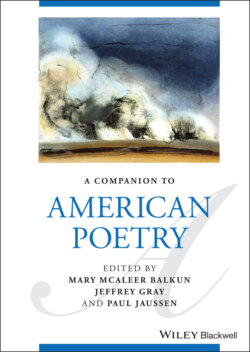Читать книгу A Companion to American Poetry - Группа авторов - Страница 21
4 The Inca in the Nineteenth-Century US Poetic Imaginary
ОглавлениеAdam BradfordIdaho State University
During the early decades of the nineteenth century, as the newly formed United States turned an imperial eye further and further westward, competing political and ideological camps proposed alternative solutions to what was commonly referred to as the “Indian question”—namely what to do with the significant numbers of native peoples occupying land that white settlers wanted. Solutions to this question had largely diverged along two lines. Both camps assumed that native peoples were disappearing at significant rates, and both were deeply attuned to the question of what kind of relationship the remaining native peoples should have to the land they currently occupied. The first of these suggested that native peoples were doomed to extinction unless aggressively evangelized with both Christian doctrine and white American culture; the second believed that native peoples’ supposedly innate inability to resist the vices of such culture—such as drinking and gambling—meant that their only hope for survival lay in removing them far enough away from the source of those vices that they could be insulated from their ill effects. In addition to these, there were, of course, others who felt that the project to “civilize” native peoples was futile, and that their extinction in the face of civilization was inevitable regardless of any attempts at intervention. By 1830, when the Jackson administration secured the passage of the Indian Removal Act, the political ascendancy of the argument for removal over the others was crystallized into law. It was an argument that, perhaps unsurprisingly, was supported, if not actively advanced, by land-hungry white Americans.1 But this did not mean that the broader populace rested easy with the notion nor believed that it was the best course of action. In fact, the question of the appropriate way to interact with native people was still anything but settled in the minds of white America, and the competing ideologies that might otherwise have been obfuscated by the passage of the Indian Removal Act were visibly, and in some ways even more influentially, rehearsed on the stages of the nation’s theaters and in the literature that proliferated in the bookstores, magazines, and newspapers of the time period. Indian plays, such as Metamora by John Augustus Stone, and vanishing Indian tales and poems by writers like James Fenimore Cooper and William Cullen Bryant, engaged the question of white–Indian interactions, and have been copiously written about.2 What has gone relatively unexplored is the way that contemporary Americans mired in the “Indian question” turned their eyes toward another group of native people and viewed them as a historical corollary whose fate could be mined to provide purchase for negotiating this pressing question. As the literature of the period examined here suggests, the history of the South American Inca served contemporary American writers and poets as an invaluable touchstone for reconsidering the nature of the relationship between the white American body politic and native peoples, and, ultimately, as a vehicle for conceptualizing American imperial identity in relationship to other colonizers. The nature of that identity was crucially important to early America, for the shadows of the Spanish Black Legend still lingered in the collective consciousness, and Americans’ treatment of native peoples carried with it, much as it had for Spain, the possibility of tarring the fledgling nation with a stain that might long mar its national character.
